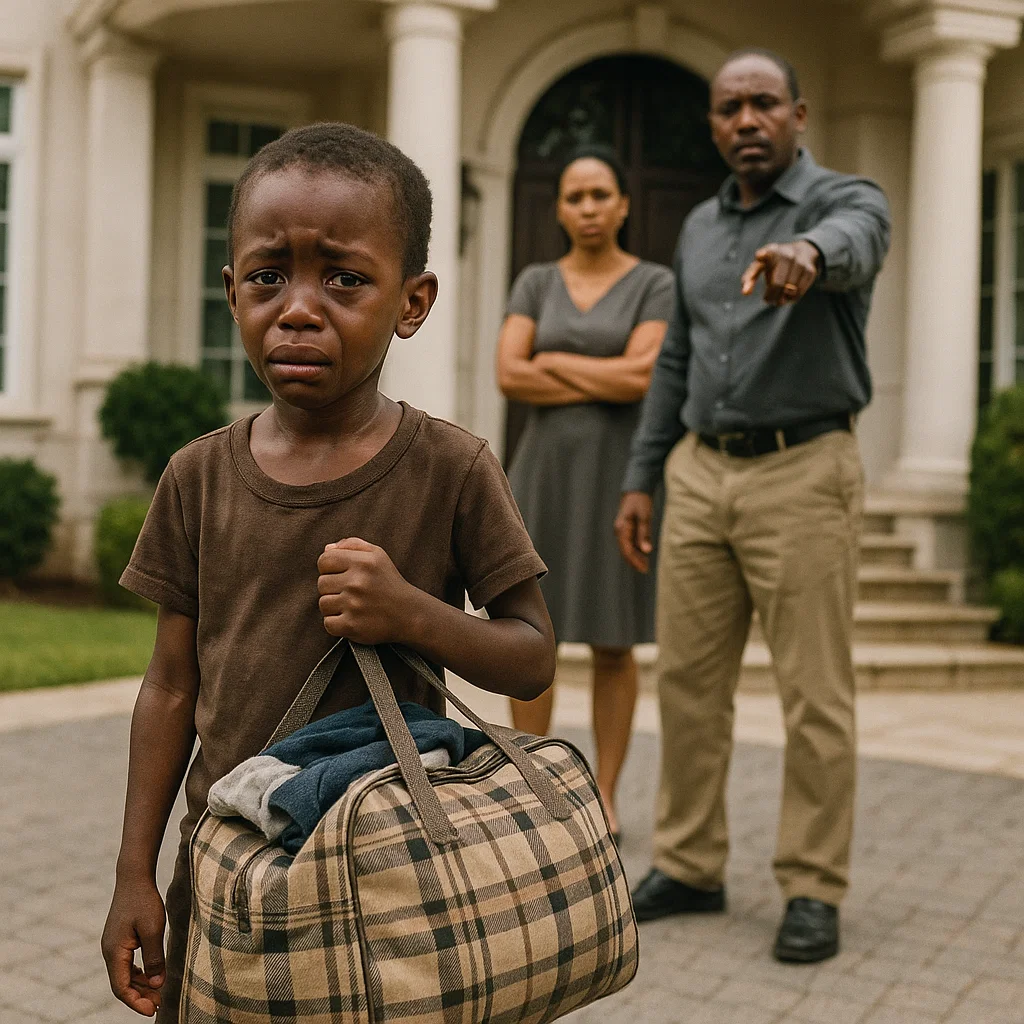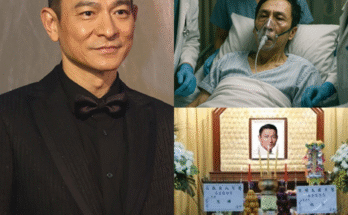
In a quiet corner of an African city, under the weight of grief and betrayal, a little boy’s life was forever altered. At just five years old, he stood in front of the towering gates of a wealthy villa, his frail body trembling, his eyes swollen from tears. His mother had died too soon, and his father, remarried only months later, turned from protector to stranger.
The new stepmother, cold and unyielding, declared the child unwelcome. His desperate plea rang out: “I have nowhere to go… please don’t leave me!” But the response was brutal—his belongings were stuffed into a ragged bag, hurled at his feet. The iron gates slammed shut.
Left alone in the red dust of the road, shadows lengthening around him, the boy believed it was the end of everything. Yet, as history would reveal, that very moment marked the beginning of a story the world would never forget.
Neighbors remember the scene vividly. Some whispered in shock, others turned away in silence. Few dared intervene in the affairs of the powerful family. “It was heartbreaking,” said one woman who lived across the street. “He was so small, so fragile. But in his eyes, I saw a strength that scared even the adults.”

The boy’s name was withheld in early records, known only later as Kwame, a name meaning “born on Saturday” in his local dialect.
For days after his abandonment, Kwame wandered. He slept under trees, begged for scraps at markets, and drank from muddy streams. Passersby often ignored him, dismissing him as just another child lost to poverty. But to those who stopped long enough to notice, there was something striking about him—an unusual resilience, an ability to keep moving even when hunger and fear gnawed at him.
Kwame’s life could easily have ended there, swallowed by the streets as had happened to countless other children. But fate intervened in the form of Sister Miriam, a volunteer at a struggling local mission.
Miriam recalled seeing Kwame crouched outside a church gate, clutching his ragged bag like a shield. “He looked like he’d already lived a thousand years of sorrow,” she said. She brought him inside, gave him food, and listened as he haltingly told his story.
The mission became Kwame’s first refuge. There, he was given not just shelter but also access to books, chalk, and slates. Miriam noticed his hunger for knowledge rivaled his hunger for food. “He devoured every word, every number,” she said. “He wasn’t just learning—he was searching for something bigger.”
By age ten, Kwame had already surpassed his peers academically. Despite a shaky start, he earned scholarships that propelled him into better schools. Teachers marveled at his memory and ability to connect ideas far beyond his age.
But his brilliance was coupled with humility. He never forgot the sting of rejection or the nights spent alone on dusty roads. “I want to help children like me,” he once told a mentor. “No child should feel they are nothing.”
That vision guided him forward
Kwame’s rise was meteoric. In his teens, he entered national science competitions, often walking miles barefoot to reach venues. His projects—ranging from low-cost water filters to solar-powered lanterns—caught the attention of international judges.
At 18, he earned a scholarship to study engineering abroad. Leaving his homeland was bittersweet, but he carried with him the memory of that slammed iron gate and the promise he made to himself: to turn pain into purpose.
In university, he thrived. He designed renewable energy solutions for rural villages and pioneered affordable medical devices. By his mid-20s, he had founded a startup dedicated to bringing sustainable electricity to underserved African communities. His innovations won global awards and drew investors.
But more than the accolades, Kwame cared about impact. For every invention he sold to companies, he ensured a portion went directly to providing free resources for children in need.
Twenty-five years after being cast out, Kwame returned to the very city where his story began. No longer the skinny boy crying in dust, he was now a man celebrated on global stages, invited to speak at international forums, and lauded as one of Africa’s brightest innovators.
Locals who once pitied him lined the streets to welcome him back. Journalists followed his every move. The boy once deemed worthless had become a beacon of hope.
And in a twist no one expected, Kwame sought out the villa where his suffering began.
The villa’s iron gates were still there, though rusted with time. The father who had once turned him away was old now, frail and regretful. His stepmother, still stern, peered out with narrowed eyes.
Neighbors watched as Kwame stood before the gates that had once shut him out. Cameras clicked. Reporters held their breath. Would he condemn them? Seek revenge?
Instead, he simply said:
The father wept openly. The stepmother said nothing. Kwame turned and walked away, never looking back.
Kwame’s next act stunned the world. He established the Foundation of Fire and Light, named in memory of the fire that had claimed his mother and the darkness that nearly claimed him.
The foundation built schools, orphanages, and innovation hubs across Africa. Its mission: to ensure no child would ever again be called a “burden” or “package deal no one wants.”
In just a decade, the foundation educated thousands, gave scholarships to orphans, and brought solar power to entire villages. For many, Kwame became more than an innovator—he was a savior, proof that one broken life could transform millions.
Kwame’s story spread worldwide. He was honored by the United Nations, awarded humanitarian prizes, and invited to meet global leaders. Yet he remained humble, always crediting Sister Miriam and the mission that first gave him a chance.
In interviews, he often returned to that moment outside the villa.
Still, whispers linger. What if Maria had not found him? What if no one had cared enough to stop? How many other children still wander, unseen, unheard, waiting for someone to notice?
Kwame himself acknowledges this unease. “For every one of me, there are thousands who are lost,” he says. “My story should not be the exception—it should be the rule.”
Today, Kwame continues his mission, crisscrossing continents to champion the cause of vulnerable children. The little boy once discarded in the dust has indeed become the fire that lights the world.
And yet, in every speech, he leaves his audience with a haunting reminder:
Whether his legacy will transform the systems that still fail so many remains uncertain. But one truth endures: the boy who was once unwanted proved that even the harshest rejection can become the seed of unimaginable destiny.


